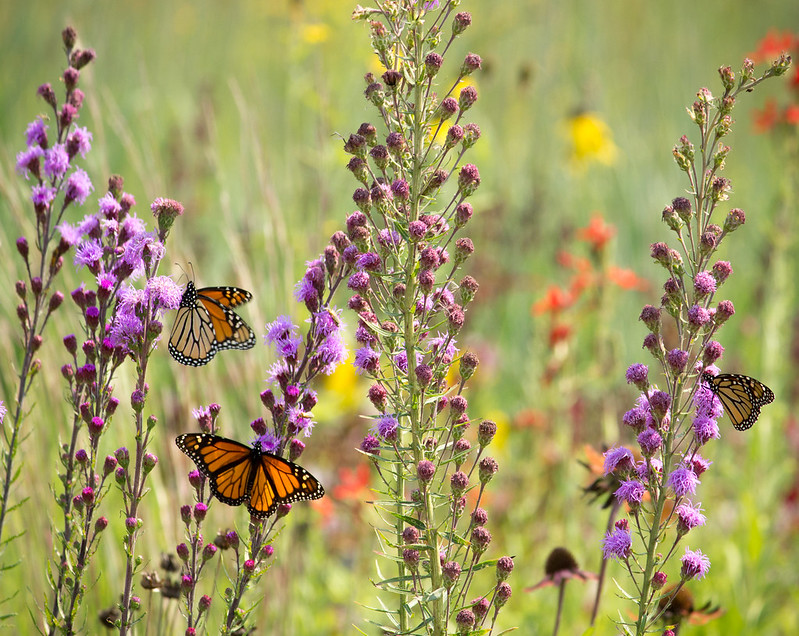
Monarchs and other pollinators, like all wildlife, need five things to survive: food, water, shelter, places to raise young, and areas that should be free of pesticides. A Monarch habitat can be easily added to your existing flower garden. Monarch habitats consist primarily of milkweed and nectar plants. There is no minimum area requirement, but for best results, you’ll need at least 100 square feet. The total area may be split among several sites at your location. There is no upper limit for the size of a Monarch habitat. With monarchs in a serious decline, it is more important than ever for people to take part in their conservation. One of the most rewarding ways you can help is by creating a monarch butterfly habitat.
Habitat Requirements
- Size of Planting Area: At least 100 square feet.
- Exposure: At least 6 hours of sun per day.
- Drainage and Soil Types: Low-clay soil with good drainage is ideal.
- Shelter: Monarchs need shelter from harsh weather and predators. A brush pile, a dense patch of shrubs, or a meadow filled with tall grasses and wildflowers.
- Water: Monarchs and other butterflies need moisture but cannot land on water to drink, so a typical garden pond, fountain, or birdbath won’t help them. Instead, butterflies sip liquid from muddy soil. This behavior is known as “puddling” and not only provides moisture but also salts and other dissolved minerals that the butterflies need.
- Milkweed Plants: The habitat should consist of milkweed, as this is the only source of food for monarch caterpillars. Include at least 10 individual milkweed plants (multiple species is recommended).
- Nectar Plants: Habitat should consist of a mix of nectar plants. Nectar plants provide food for adult monarchs and other pollinators throughout the season. Pick plants from early, mid – and later-flowering species and have at least three different kinds of plants in bloom at any time. Include the mid-season flowering milkweeds. Not only will you offer a dependable food source to the monarchs, but your butterfly garden will have visual interest all year long.
- Management: Water and weed regularly. Mulch, fertilize, or amend the soil. Remove large dead plant material and invasive plants. Eliminate the use of insecticides.
Milkweed
Milkweed is an essential feature of monarch habitat because it is a monarch host plant; monarchs lay their eggs only on milkweeds, and monarch larvae only eat milkweed leaves. Including milkweed species native to your region in your monarch habitat is extremely important. Not only does native milkweed offer a food source for monarch larvae, but it provides nectar for a variety of other pollinators and also provides habitat for many other organisms. Native plants are well adapted for the climatic conditions of their region and are easy to care for. Diversity in native plant communities supports many native insects and also provides a number of ecological benefits, such as erosion reduction and filtration.
